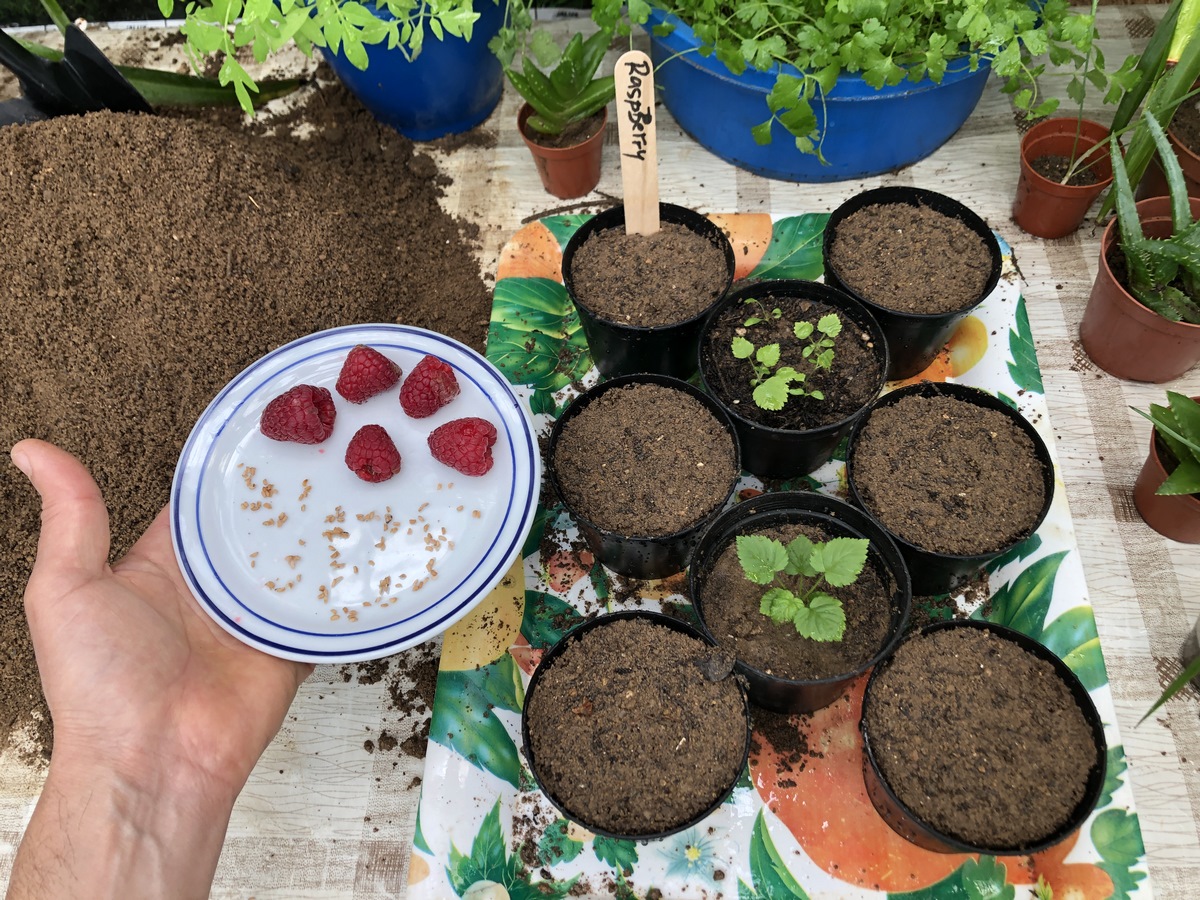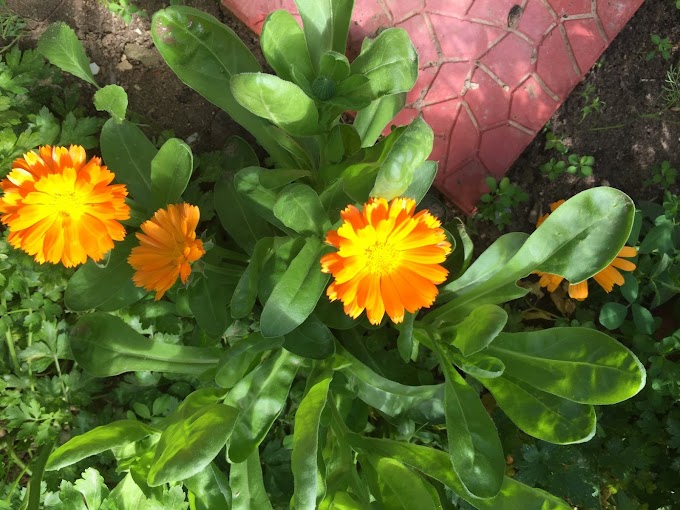🍓 A Delicious Adventure in Your Living Room Garden!
If you’ve ever tasted a sun-warmed raspberry picked straight from the bush, you know it’s pure magic. But did you know you can recreate that magic right inside your home? Yes — you can grow your very own raspberries indoors starting from nothing more than a handful of seeds!
(toc)(Table of Content)
Whether you're a beginner or a seasoned green thumb, growing raspberries from seed is a rewarding indoor gardening adventure. It’s slow, yes. But it’s also one of the most satisfying things you’ll ever do — watching tiny seeds evolve into fruit-bearing plants, all under your care.
Let’s walk through the journey from berry to bush.
🍇 Step 1: Harvesting Seeds from Raspberries
It all starts with the right fruit.
Look for organic, fully ripe raspberries — ideally ones that are plump, deep red, and fragrant. Non-organic fruits might be treated with chemicals that hinder germination.
Here’s how to extract the seeds:
- Place the raspberries in a mesh strainer.
- Use the back of a spoon to gently mash the berries and release the seeds.
- Rinse thoroughly under cool water until all the pulp is gone.
- Lay the clean seeds on a paper towel to dry for 1–2 days.
👉 Bonus Tip: Cold stratify your dried seeds by placing them in a ziplock bag with a damp paper towel and storing them in the refrigerator for 4–6 weeks. This mimics winter and helps the seeds “wake up.”
🪴 Step 2: Get Your Containers Ready
You don’t need anything fancy to start. Use small containers like seedling trays, yogurt cups, or repurposed jars with drainage holes punched into the bottom.
Clean them thoroughly with warm, soapy water to kill any lingering bacteria or fungus. Raspberries, like most seedlings, are delicate in the early stages and prone to rot and disease if sanitation is overlooked.
🌱 Step 3: Use a Quality Seed Starting Mix
Forget backyard soil or heavy potting compost. For seed starting, you need a light and airy medium that allows delicate roots to grow easily.
Choose a commercial seed starting mix — ideally one that contains a blend of:
Fill each container with the mix, leaving a little space at the top. Lightly moisten the soil using a spray bottle before planting.
🌾 Step 4: Sow the Raspberry Seeds
Place 2–3 seeds in each container. Raspberry seeds don’t need to be deeply buried — just a light dusting of soil (about 1/8 inch) is enough.
Gently press the soil down and mist the top with water to settle everything in place.
💡 Step 5: Provide Ideal Growing Conditions
This is the waiting game — and it’s where most beginner growers get nervous. Raspberry seeds can be slow to germinate. But give them the right care, and magic will happen.
Temperature: Keep them warm — around 70°F (21°C) is ideal.
Light: Use a sunny windowsill or a grow light for 12–14 hours a day.
Moisture: Keep the soil moist, not soggy. Use a spray bottle to mist gently every day or two.
Humidity: Consider covering your containers with a plastic dome or wrap to retain humidity. Just remove the cover daily for airflow.
🌿 Step 6: Be Patient and Watch for Life
Raspberry seeds can take 4 to 6 weeks to germinate — sometimes longer. When those first tiny green sprouts emerge, it feels like a miracle.
Once they’re about an inch tall with a couple of small leaves:
- Thin the seedlings by snipping the weaker ones at the base.
- Leave one strong seedling per pot to give it space to thrive.
🪴 Step 7: Transplant When They're Ready
When your raspberry seedlings are 3–4 inches tall and have multiple leaves, they’re ready to move to bigger containers.
Transplant them into 6–8 inch pots with a rich organic potting mix. Make sure these pots have proper drainage, and start feeding the plants every few weeks with a diluted organic liquid fertilizer.
As the plants grow:
- Provide support like a small trellis or bamboo stake.
- Prune gently to encourage bushier growth.
- Give them consistent light and water.
🍓 Indoor Fruit Harvest? Yes, It’s Possible!
While raspberries typically produce fruit in their second year, you might see early flowers and berries by the end of the first if conditions are ideal.
Want to grow them permanently indoors? Choose a dwarf or container-friendly raspberry variety and give them plenty of light, a 5-gallon container, and regular feeding. You’ll be enjoying homegrown raspberries without ever stepping outside!
💬 Conclusion: A Garden in Your Hands
Growing raspberries from seed indoors is about more than just fruit — it’s about wonder, patience, and the deep satisfaction of nurturing life. With time, care, and a bit of sunlight, you can turn a spoonful of seeds into a leafy, fruiting plant right in your own home.
Watch: How to Grow Raspberries from Seed Indoors — Step-by-Step Guide!🍓
So next time you’re snacking on a raspberry, don’t toss the seeds. Plant them. Grow them. And get ready to enjoy the fruits of your labor — literally.
🌟 Want to grow your own Raspberry from seeds!!! 🍓 50 Seeds Jumbo RED Raspberry Bush Seeds Rubus Raspberries Sweet Fruit: 🍓 Fruit Plant Seeds 200+ Raspberry Seeds Bare Root Plants - All Season Collection: 🍓 Red Raspberry Seeds (European Raspberry, Framboise), 100 Heirloom Seeds Per Packet, (Isla's Garden Seeds), Non GMO Seeds, Botanical Name: Rubus idaeus: 🌟 Choose the best seed starting mix to ensure your plants are healthy and happy from the time they germinate until the day they get tucked into the ground!!! Miracle-Gro Seed Starting Potting Mix, 8 Quarts (Pack of 2), For Use in Containers: Espoma Organic Seed Starter Premium Potting Soil Mix - All Natural & Organic Seed Starting Mix with Mycorrhizae. for Organic Gardening, 8 qt, Pack of 2: 🌟 Shop Best Seed Starter Tray!!! MIXC 10 Packs Seed Starter Tray Seed Starter Kit with Humidity Dome (120 Cells Total Tray) Seed Starting Trays Plant Starter Kit and Base Mini Greenhouse Germination Kit for Seeds Growing Starting: Seed Starter Natural Potting Soil Mix for Germination and Growth (Made in USA) (4 Dry Quarts)
❓ Top 10 Frequently Asked Questions (FAQs)
1. How long do raspberry seeds take to germinate?
Anywhere from 4 to 8 weeks, depending on temperature, humidity, and whether the seeds were stratified.
2. Do I need to cold stratify raspberry seeds?
Yes! Cold stratification for 4–6 weeks improves germination rates significantly.
3. Can I grow raspberries indoors permanently?
Yes, but they need lots of sunlight, large containers, and consistent care. Choose dwarf or compact varieties for best results.
4. What’s the best time to start raspberry seeds indoors?
Late winter or early spring is ideal, so the seedlings are ready for transplanting by late spring or summer.
5. What should I do if my seeds don’t sprout?
Wait longer — raspberry seeds can take time. If nothing after 8–10 weeks, try again with freshly stratified seeds and double-check your setup.
6. What size pot should I transplant raspberry seedlings into?
Start with 6–8 inch pots. Eventually, move them to 5-gallon containers if growing indoors long term.
7. Do raspberry plants need a lot of sunlight?
Yes. At least 6 hours of direct sunlight or 12–14 hours of artificial grow light daily.
8. When will my indoor raspberries bear fruit?
Usually 12–18 months after germination, depending on the variety and growing conditions.
9. Can I use seeds from store-bought raspberries?
Yes, especially if they’re organic and fully ripe. Just be sure to clean and stratify the seeds.
10. How do I care for raspberry seedlings after transplanting?
Provide full light, water when the top inch of soil is dry, and feed every 2–3 weeks with diluted organic fertilizer.
This website is a participant in the Amazon Services LLC Associates Program, an affiliate advertising program designed to provide a means for sites to earn advertising fees by advertising and linking to Amazon. Some of the links to products on this site are affiliate links. These are products that I've used or recommend based from homesteading experience. I do make a small commission (at no extra cost to you) from these sales. (alert-warning)





%20Seed%20Starting%20Trays%20Plant%20Starter%20Kit%20and%20Base%20Mini%20Greenhouse..jpg)










